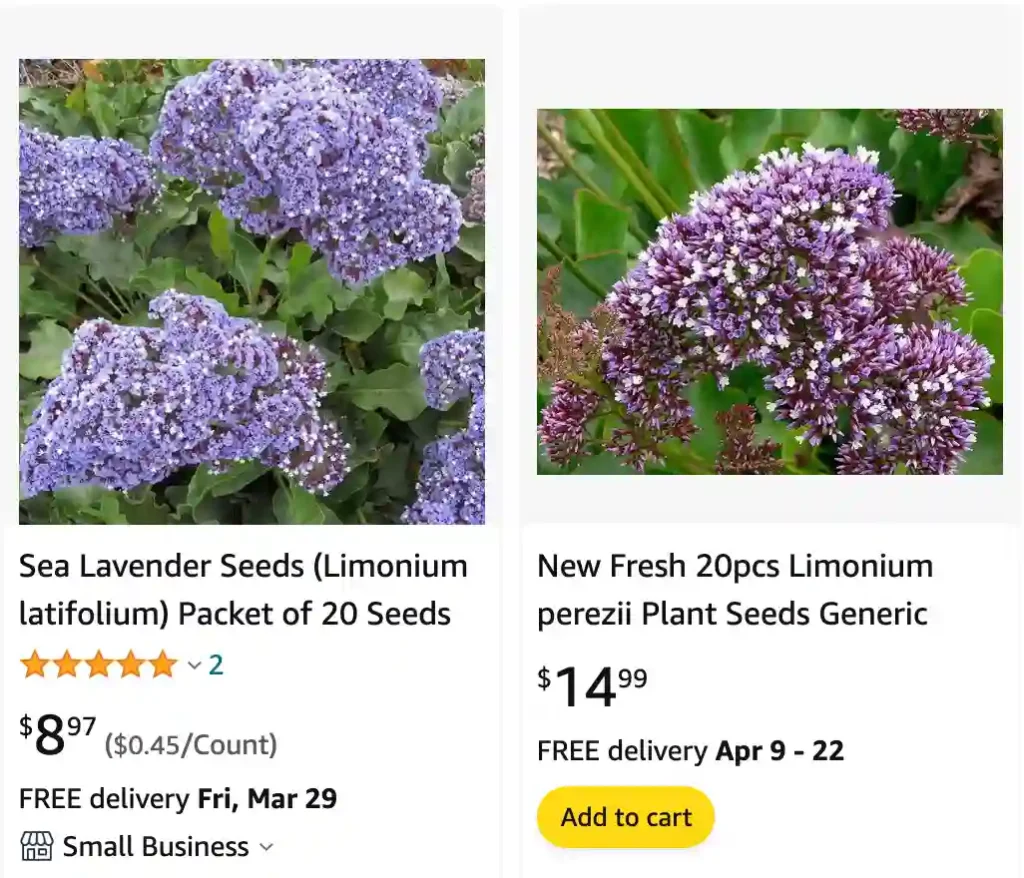Introduction
When I first encountered Limonium perezii, also known as Perez’s sea lavender, I was captivated by its enchanting presence. The lush greenery and vibrant blooms spoke to me on a deeply personal level, drawing me into the world of this remarkable perennial herb. In this narrative, I’ll take you through the fascinating journey of my experiences with Limonium perezii, from its physical attributes to its adaptability and the challenges it poses in cultivation.
Unveiling the Beauty: Limonium Perezii Up Close
Limonium perezii, with its robust woody rhizome, boasts thick oval leaves that form an exquisite basal rosette around the stem. As I ran my fingers over the leaves, I marveled at their resilience and the sheer elegance they added to my garden. The inflorescence, a branching panicle adorned with lavender sepals and white petals, stood tall at 45 centimeters, creating a spectacle that never failed to capture attention.

A Symphony of Names: Perez’s Sea Lavender and Beyond
The world of Limonium perezii is rich in nomenclature. Referred to as Perez’s sea lavender or seafoam statice, the plant has a variety of monikers that reflect its versatility and widespread use in gardens globally. Interestingly, it also goes by the name marsh rosemary, a title that adds a poetic touch to its identity.
Roots in the Canary Islands: From Native Shores to Global Gardens
Having originated from the Canary Islands, it has traversed continents and made itself at home in gardens worldwide. My fascination deepened as I considered the plant’s journey, thriving in environments far from its native shores. This adaptability became a testament to its resilience and enduring allure.
The Intricacies of Limonium Perezii’s Growth
In my pursuit of understanding this perennial, I delved into its growth patterns and behaviors. Standing at a modest 3 feet, Limonium perezii unfolds into a perennial with a woody rhizome, presenting a striking rosette of triangular leaves. The purple flowers, a staple in floral arrangements, add a touch of sophistication to any garden.
Navigating Challenges: Limonium Perezii’s Invasive Tendencies
As I nurtured Limonium perezii in my garden, I encountered challenges related to its potential invasiveness. The plant tends to become weedy when it hybridizes with other Limonium species, particularly in coastal regions from Ventura to San Diego counties. I discovered the importance of cautious cultivation, avoiding areas near coastal riparian habitats where naturalization could occur.
The Dilemma of Inclusion: Limonium Perezii and the Invasive Plant List
Intriguingly, Limonium perezii teetered on the edge of inclusion in the invasive plant list in 2015. The decision to exclude it from the list, despite its potential invasiveness, intrigued me. As I probed deeper, I found that its popularity in horticulture and the need for further research played pivotal roles in this delicate balance.
Limonium Perezii’s Global Family: A Plumbago Connection
Being a member of the Plumbago family (Plumbaginaceae), Limonium perezii finds itself among over 600 Limonium species globally. The intricate web of plant life, with 18 Limonium species in South Africa alone, fascinated me. Limonium peregrinum, with its coastal dunes habitat, presented a unique counterpart to the more adaptable Perez’s sea lavender.
A Dazzling Display: Limonium Perezii in Full Bloom
My garden transformed into a spectacle as it burst into full bloom. The large flower heads, comprised of papery flowers in deep purple and creamy white, created a bold and captivating display. The adaptability of this plant to local conditions, despite its origin in the Canary Islands, left me in awe.
A Resilient Survivor: Sea Lavender’s Salt-Tolerant Marvel
As I observed Limonium perezii’s growth, I marveled at its resilience to coastal conditions. Its salt-tolerant nature recommended it for rocky pockets in challenging coastal gardens. The plant’s ability to endure moderate frosts while thriving in low-water environments showcased its versatility.
Cultivation Chronicles: Tips and Tricks
In my journey of cultivating Limonium perezii, I unearthed valuable insights. This low, rounded shrub, reaching heights of 0.5 meters, demanded a sunny position in well-drained soils. Its aversion to high humidity and moderate frost tolerance added layers to the considerations for optimal growth.
Adaptable Containers and Pruning Rituals
Experimenting with different cultivation methods, I discovered the suitability of large containers for Limonium perezii. The stems, becoming woody with age, prompted me to engage in light pruning after flowering, encouraging bushy new growth. These rituals became integral to maintaining the health and vitality of this sea lavender variety.
Drying the Beauty: Limonium Perezii in Bouquets
The allure of Limonium perezii extended beyond the garden into the realm of floral arrangements. The process of drying the flowers, cutting stalks and hanging them upside down in a cool place, added a hands-on dimension to my engagement with this remarkable plant. The resulting dried flower bouquets carried the essence of my garden throughout the seasons.
Propagation Puzzles: Unlocking the Secrets of Limonium Perezii’s Offspring
Propagation, I discovered, posed a challenge with Limonium perezii. While difficult, dividing old established clumps in late autumn or early winter proved to be a viable method. Alternatively, sowing fresh seeds in deep trays demanded patience and a delicate balance of moisture and darkness for optimal germination.
The Everlasting Impact: Limonium Perezii in Floral Artistry
Limonium perezii’s enduring nature extends beyond its lifespan. The long-lasting flower heads, perfect for both fresh and dried arrangements, cemented its place in the world of floral artistry. Whether adorning a vase on my dining table or gracing a dried flower bouquet, Perez’s sea lavender became a symbol of timeless beauty.
Conclusion: Limonium Perezii, a Living Tapestry of Beauty
In concluding my journey with Limonium perezii, I am left with a profound appreciation for this resilient and captivating perennial. From its humble origins in the Canary Islands to its global presence in gardens, Perez’s sea lavender weaves a living tapestry of beauty. My experiences with this plant have transcended the boundaries of a mere garden ornament, evolving into a personal connection with nature’s wonders. Limonium perezii, with its enduring allure, has become a cherished companion in my horticultural odyssey.



